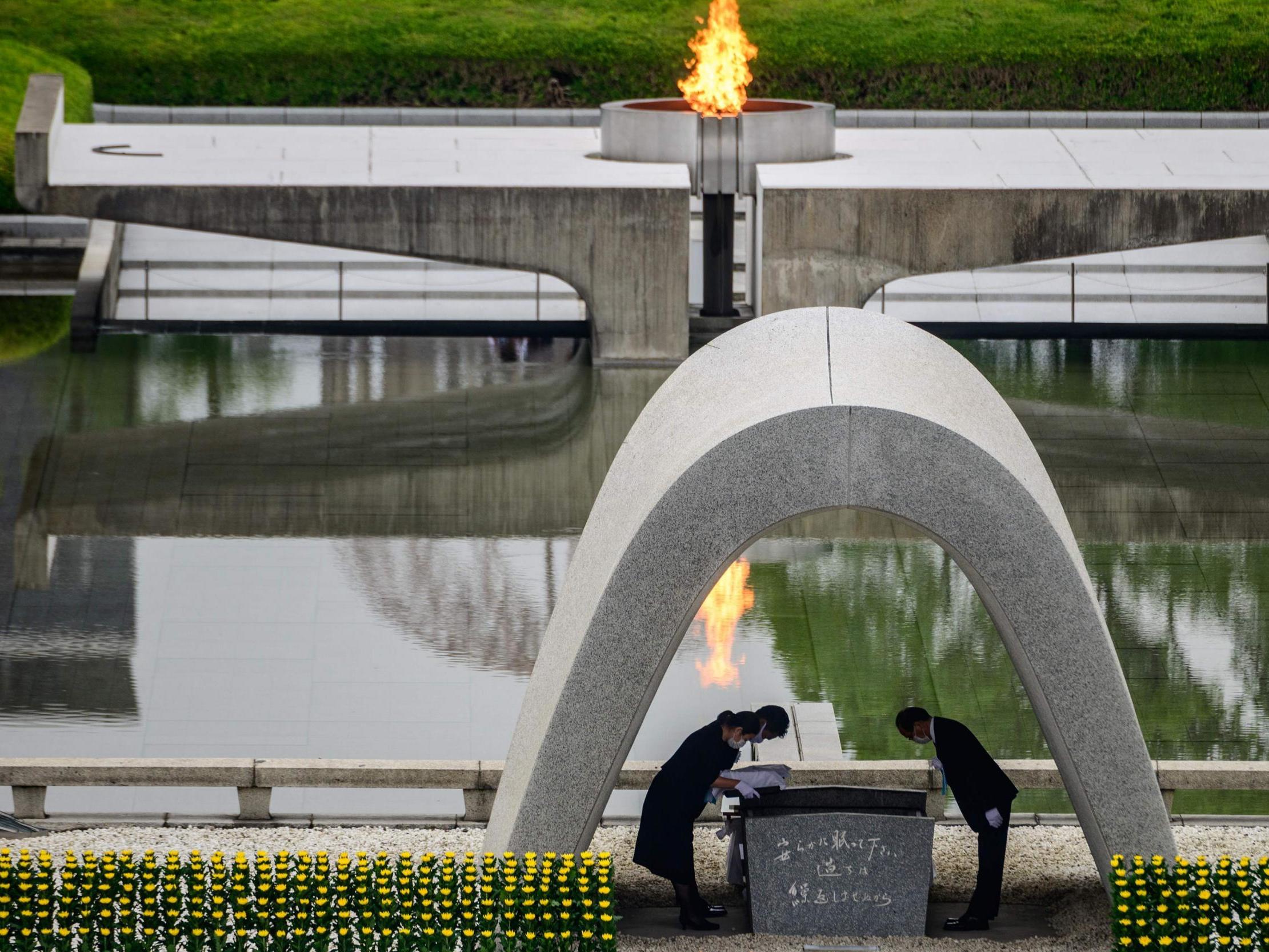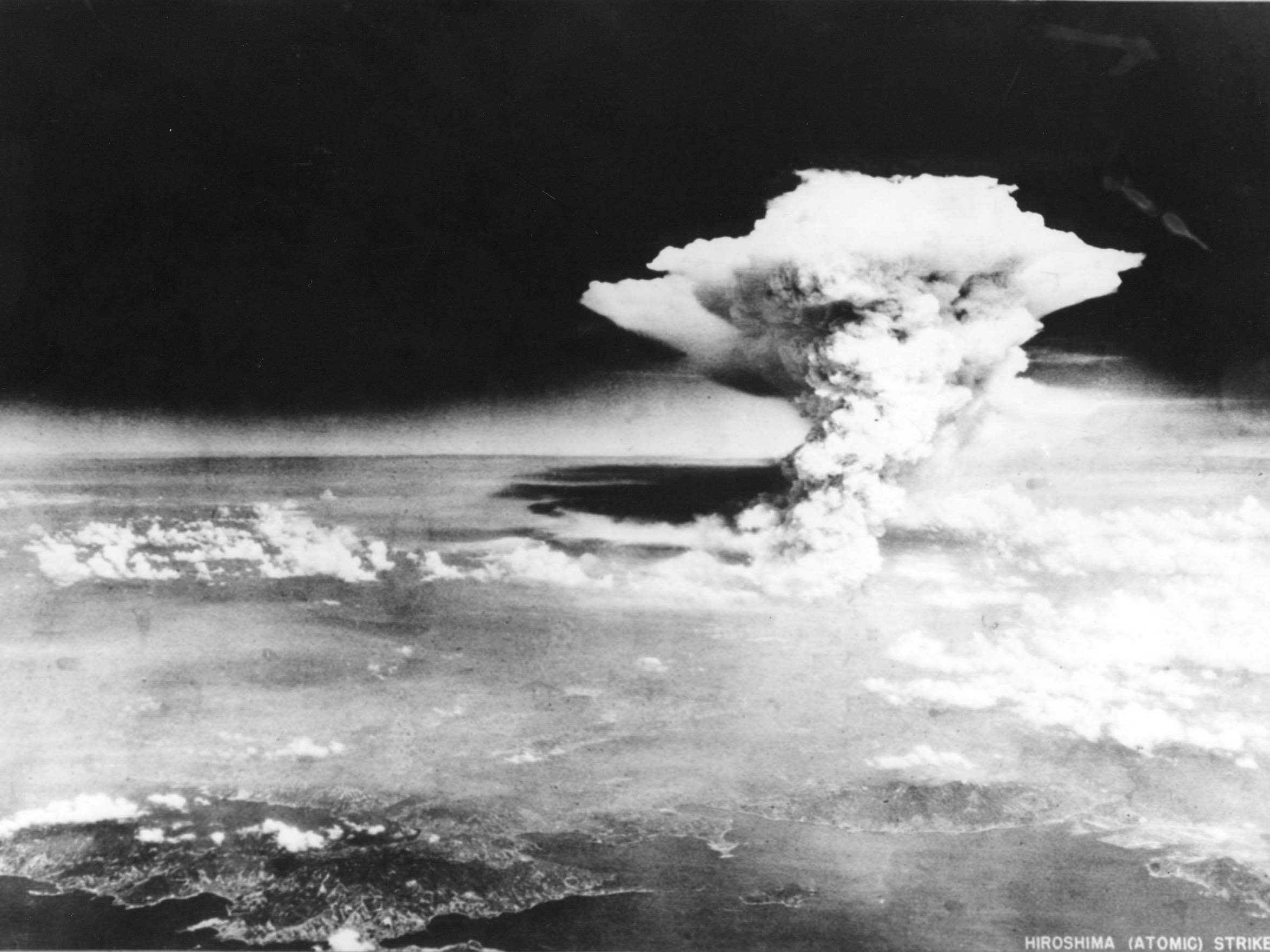Hiroshima and Nagasaki survivors call for disarmament 75 years on from nuclear attacks
Rory Sullivan hears from experts and survivors on why the testimonies of the hibakusha are key to ‘changing the entire narrative about nuclear weapons’


“In a city of 245,000, nearly 100,000 had been killed or doomed at one blow; a 100,000 more were hurt.”
These haunting words, written by the journalist John Hersey in The New Yorker in August 1946, showed Americans the scale of what their country had unleashed on the population of Hiroshima the previous year.
However, the true horror exposed by Hersey’s reporting, which ran to 30,000 words and spanned an entire issue of the magazine, lay not in numbers but in a narrative which tracked the experiences of six atomic bomb survivors.
By tracing the steps and sights of two doctors, two priests, a clerk and a widow with young children, he gave a human face to the city’s suffering in the aftermath of the explosion.
Soon after the US occupation of Japan ended in 1952, the survivors of Hiroshima and Nagasaki, known collectively as the hibakusha, started to publicly speak out about their experiences.
Seventy-five years on from the detonation of the two atomic bombs, hibakusha continue to campaign for nuclear disarmament through their first-hand testimony.
Howard Kakita, who was born in the US in 1938 and was at his grandparents’s home in Hiroshima on the fateful date of 6 August 1945, is one of them.
Despite being very close to ground zero, he, his older brother Kenny and his grandparents survived.
Aged seven at the time, he vividly recalls seeing a stream of people with terrible injuries and corpses lining the road, as his family made their way to the train station to leave the devastated city.
Like many others, he and his brother went bald and grew sick soon afterwards, probably as a result of radiation poisoning.

Speaking all these years later, Mr Kakita says the memories of the hibakusha “send a powerful message to the leaders of the world to stop the proliferation of nuclear weapons and ban nuclear warfare altogether”.
A history of campaigning
The hibakusha’s campaigning work started in earnest in the 1950s, with the foundation of Nihon Hidankyo, a nationwide organisation of A-bomb survivors, in 1956.
Before that, those who had been at Hiroshima and Nagasaki suffered discrimination.
Bo Jacobs, a social historian of nuclear technologies at the Hiroshima Peace Institute, told The Independent: “After the occupation ended in 1952, the hibakusha were pretty hidden away. It was a period of real discrimination against them.
“There was not much public activity in which they were involved in any shape or form until 1954,” he added.
Among other obstacles, the survivors often found it hard to get a job or marry because of other people’s concerns about their health and the health of their future children.
The survivors’s movement, which gave them a voice, was galvanised by the US’s testing of a hydrogen bomb in the south Pacific on 1 March 1954, according to Mr Jacobs.
Carried out on the Marshall Islands, the Castle Bravo test resulted in the crew of The Lucky Dragon being admitted to hospital – the Japanese ship was coated in radioactive ash from the bomb’s fallout.
Like thousands of survivors from Hiroshima and Nagasaki, one crew member died six months later due to his exposure to radiation.

In the decades after the survivors’s movement took off, hibakusha travelled widely around the globe to speak about what they had witnessed.
Mr Jacobs explained: “There’s always been this story in Hiroshima and Nagasaki that the act of witnessing and testimony will compel nuclear abolition.
“So if the world would understand what had happened – hear the stories of the hibakusha – then everyone would be against nuclear weapons.”
Recent success
The advocacy work undertaken by survivors living in Japan and elsewhere has had tangible results in recent years, with the arrival of the Treaty on the Prohibition of Nuclear Weapons (TPNW) in 2017.
Tim Wright, who works as the treaty coordinator of the International Campaign to Abolish Nuclear Weapons (Ican), told The Independent that the hibakusha played a large role in getting the treaty passed.
Survivors spoke at several international conferences in 2013 and 2014 on the humanitarian implications of nuclear attacks, as well as during the TPNW negotiations.
Speaking from Melbourne, Australia, Mr Wright said: “Their testimonies have been very important in changing the entire narrative about nuclear weapons.
“For a long time the focus was on abstract concepts such as deterrents and strategic stability and so on. And that really obscures the reality of what these weapons are.
“The hibakusha have for decades warned that if we keep these weapons, one day they’ll be used again and the consequences will be utterly catastrophic.”
Survivors from Hiroshima and Nagasaki have long been part of Ican, which was awarded the Nobel Peace Prize in 2017 for its work to eliminate nuclear arms.
In fact, Setsuko Thurlow, a hibakusha, was one of the people who collected the prize in Oslo on the group’s behalf.
Speaking about the advocacy work of survivors at the awards ceremony, she said: “We rose up. We shared our stories of survival. We said humanity and nuclear weapons cannot coexist.”
Now, more than 40 countries have ratified the treaty, which will come into effect after 50 states have signed it.
Writing in The Irish Times on Hiroshima Day, Simon Coveney, the Irish foreign affairs minister, confirmed that his country would be the latest to ratify the treaty.
Two further countries could follow suit later on Thursday, according to Ican.
This comes after a report from Ican which suggests that the nine nuclear-armed nations spent more money on such arms last year than at any other time since the height of the cold war.
The modernisation of nuclear warheads continues, with the Stockholm International Peace Research Institute (Sipri IPRI) estimating that there are still 13,000 nuclear weapons in the world. The US and Russia have 12,175 between them.
Despite the challenges ahead regarding disarmament, the hibakusha still believe the world can right itself.
Mr Kakita, who witnessed the bombing of Hiroshima as a seven-year-old boy, said: “It is our hope that in the future there will be no events such as we experienced at Hiroshima and Nagasaki.
“And it’s also our hope that no one in the world will be designated as a hibakusha.”
Join our commenting forum
Join thought-provoking conversations, follow other Independent readers and see their replies
Comments